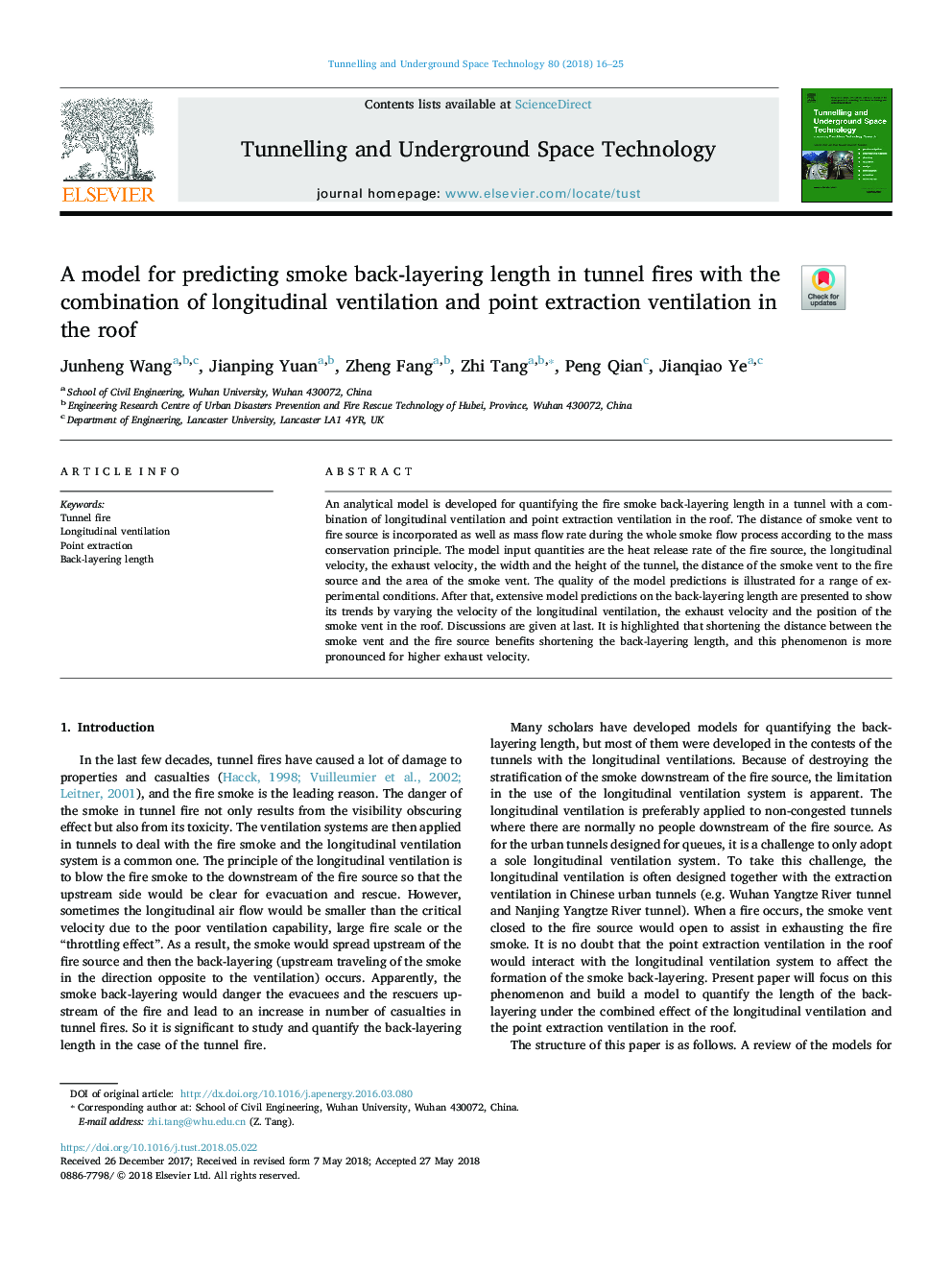| کد مقاله | کد نشریه | سال انتشار | مقاله انگلیسی | نسخه تمام متن |
|---|---|---|---|---|
| 6782139 | 1432266 | 2018 | 10 صفحه PDF | دانلود رایگان |
عنوان انگلیسی مقاله ISI
A model for predicting smoke back-layering length in tunnel fires with the combination of longitudinal ventilation and point extraction ventilation in the roof
ترجمه فارسی عنوان
یک مدل برای پیش بینی طول لایه باز دود در آتش سوزی تونل با ترکیبی از تهویه بلند و تهویه دهی نقطه در سقف
دانلود مقاله + سفارش ترجمه
دانلود مقاله ISI انگلیسی
رایگان برای ایرانیان
کلمات کلیدی
آتش تونل، تهویه طولی، استخراج نقطه، طول پشت لایه ای،
ترجمه چکیده
یک مدل تحلیلی برای اندازه گیری طول عقب دود آتش سوزی در یک تونل با ترکیبی از تهویه بلند و تهویه نقطه در سقف توسعه داده شده است. فاصله تخلیه دود به منبع آتش سوزی و همچنین جریان جریان جرم در طول روند جریان دود کامل بر اساس اصل حفاظت از توده وارد شده است. مقادیر ورودی مدل عبارتند از سرعت آزاد سازی گرما منبع آتش، سرعت طولی، سرعت اگزوز، عرض و ارتفاع تونل، فاصله تخلیه دود به منبع آتش و سطح دریچه دود است. کیفیت پیش بینی های مدل برای طیف وسیعی از شرایط آزمایش نشان داده شده است. پس از آن، پیش بینی های مدل های گسترده ای در طول طول لایه بندی ارائه می شود که نشان می دهد روند آن با تغییر سرعت تهویه طولی، سرعت اگزوز و موقعیت دریچه دود در سقف. بحث ها در آخر ارائه شده است. مشخص شده است که کوتاه کردن فاصله بین دریچه دود و مزایای منبع آتش باعث کوتاه شدن طول لایه پشتی می شود و این پدیده برای سرعت بالاتر اگزوز مشخص می شود.
موضوعات مرتبط
مهندسی و علوم پایه
علوم زمین و سیارات
مهندسی ژئوتکنیک و زمین شناسی مهندسی
چکیده انگلیسی
An analytical model is developed for quantifying the fire smoke back-layering length in a tunnel with a combination of longitudinal ventilation and point extraction ventilation in the roof. The distance of smoke vent to fire source is incorporated as well as mass flow rate during the whole smoke flow process according to the mass conservation principle. The model input quantities are the heat release rate of the fire source, the longitudinal velocity, the exhaust velocity, the width and the height of the tunnel, the distance of the smoke vent to the fire source and the area of the smoke vent. The quality of the model predictions is illustrated for a range of experimental conditions. After that, extensive model predictions on the back-layering length are presented to show its trends by varying the velocity of the longitudinal ventilation, the exhaust velocity and the position of the smoke vent in the roof. Discussions are given at last. It is highlighted that shortening the distance between the smoke vent and the fire source benefits shortening the back-layering length, and this phenomenon is more pronounced for higher exhaust velocity.
ناشر
Database: Elsevier - ScienceDirect (ساینس دایرکت)
Journal: Tunnelling and Underground Space Technology - Volume 80, October 2018, Pages 16-25
Journal: Tunnelling and Underground Space Technology - Volume 80, October 2018, Pages 16-25
نویسندگان
Junheng Wang, Jianping Yuan, Zheng Fang, Zhi Tang, Peng Qian, Jianqiao Ye,
